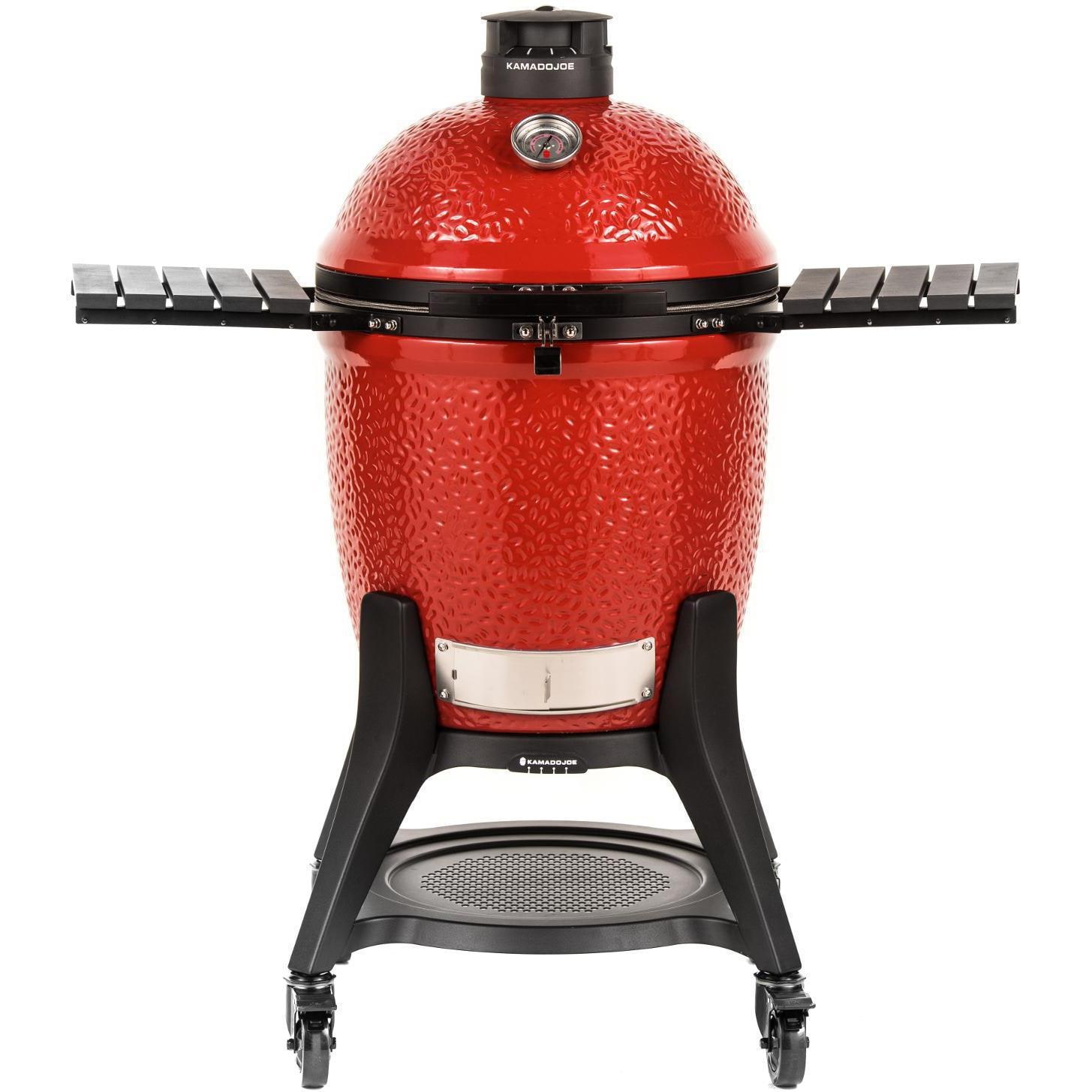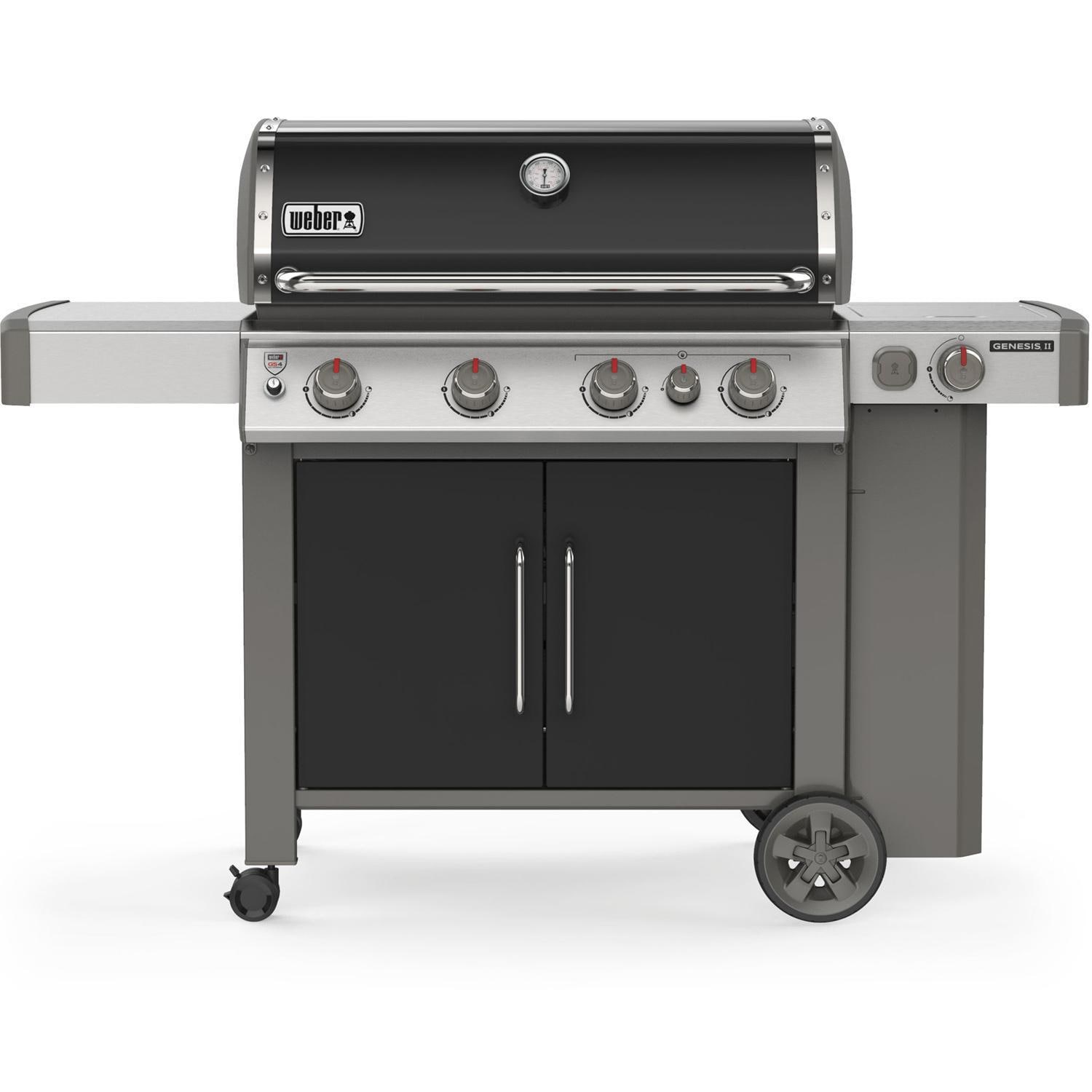Kamado Joe Classic III 18-Inch Ceramic Kamado Grill – KJ15040921
The SloRoller hyperbolic insert provides rolling and recirculating heat and smoke distribution. Air lift hinge reduces dome weight, allowing you to lift the kamado lid with ease.
- Divide & Conquer Flexible Cooking System allows you to cook food at multiple levels at different temperatures
- The SloRoller hyperbolic insert provides rolling and recirculating heat and smoke distribution
- Air lift hinge reduces dome weight, allowing you to lift the kamado lid with ease
- Cast aluminum Kontrol Tower top vent allows for consistent airflow & prevents rain from entering the grill
- Includes a heavy duty galvanized steel premium cart and powder coated aluminum side shelves which are highly durable and corrosion resistant
Kamado Joe introduces the third generation of their Classic series kamado grills with the Classic III. The Classic III is 18-inches in diameter and is constructed of a thick-walled, heat-resistant ceramic shell that helps to lock in smoke and moisture while grilling. The included Divide & Conquer cooking system is composed of a 3-tiered rack setup that holds up to four additional half moon grates and allows for a larger cooking area up to 510 sq. inches. It also allows varying height levels for different temperature ranges giving you the ability to grill whatever you want however you want. This generation of kamados now comes with a SloRoller hyperbolic insert, developed by researchers at Harvard, which provides even distribution of heat and smoke by promoting a rolling and recirculating flow inside the kamado. The hyperbolic insert is removable and can be placed on the heavy-duty galvanized steel cart under the kamado when not desired to be used. The Amp firebox is made of high-fire, heat-resistant ceramic plates that are capable of resisting damage and breakage from high heat and stress. Sitting atop of the firebox is the 304 stainless steel charcoal basket that allows for easy cleanup and conservation of unused charcoal by quickly sifting ash between the basket bars. Once the ash is sifted, the slide out 304 stainless steel ash drawer gives a means of effortless removal. At the top of the Classic III is the powder coated cast aluminum Kontrol Tower top vent that provides precision temperature control by controlling the air flow through the kamado and stays on its current setting even while opening and closing the lid. The Air Lift Hinge makes opening and closing the lid a breeze by reducing roughly 96 percent of the weight of the lid. The Classic III also comes equipped with powder coated aluminum side shelves, an analog thermometer, a 304 stainless steel latch and firebox ring, a wire mesh fiberglass gasket, grate gripper, an ash cleaning tool, 3 tiered cooking rack, 2 half moon cooking grids, 2 half moon heat deflectors, a SloRoller insert, and a Cart.
Legal disclaimers and warnings
Product packaging, owners’ manuals, installation instructions, and/or operating instructions may include more information than what is shown on our website. The content on our site is intended to be used for reference purposes only. Please fully read all included manuals and documentation before installing or using this product. WARNING for California residents: this product may contain chemical(s) known to the state of California to cause birth defects, cancer, or other reproductive harm.
Additional information
| Kamado Thickness | 1 1/4" |
|---|---|
| Cooking Grid Dimensions | 18 Inch Diameter |
| Main Grilling Area | 254 Sq. Inches |
| Total Grilling Area | 510 Sq. Inches |






Reviews
There are no reviews yet.